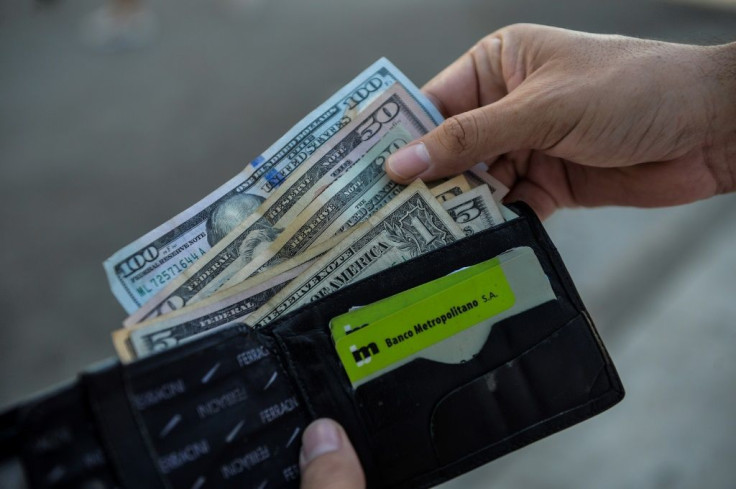Dollar Makes A Comeback As Cuba Readies Currency Devaluation
The US dollar is making a comeback as the favored currency in communist-run Cuba as the country prepares to devalue the peso to relieve pressure on a battered economy.
Cuba has a unique system whereby two official currencies have existed side-by-side for nearly three decades, the Cuban peso and convertible peso, the CUC.
Long lines outside food stores are a common sight in Havana amid chronic shortages of basic goods, and with the government planning to call time on the CUC shopkeepers are already rejecting the currency, driving a rush to dollars for those who can get them.

"CUC not accepted" reads the sign at the entry to one Havana shop.
The island's economy, buffeted by ever-tightening US sanctions, has been hammered by the coronavirus pandemic, which has left Cuba without much-needed foreign revenue provided by its Caribbean beach tourism.
The UN Economic Commission for Latin America forecasts GDP to plummet 8.0 percent this year.

In July, Havana opened dozens of state-run "dollar stores" in an effort to rake in foreign currency.
The relatively well-stocked stores are a magnet for well-off Cubans and those with dollar remittances sent from US-based Cubans.

Customers first have to open a dollar-denominated bank account, then use a debit card to pay for the goods in the stores.
Economists warn of the creation of a two-tier economy -- for the haves who can afford to buy in dollars, and the have-nots in the normal domestic economy.
"Of the 11 million inhabitants, if one million can buy in dollars, what about the other 10? If I don't have family abroad, to send dollars home, I don't have that opportunity," said Aleskis Rodriguez, 31, as he lined up to buy coffee at a Havana market still accepting CUC.

Economy Minister Alejandro Gil denied the move would herald "economic apartheid" in Cuba. Instead, he said, it will satisfy the demands of people with the most purchasing power, and add to state coffers.
Economists like Pavel Vidal, a specialist on Cuba from Colombia's Javeriana University, have long argued that the dual-currency system is unwieldy, particularly for exporters.
Vidal says Cuba's embrace of the dollar is an admission of failure by the authorities, a consequence of reforms that are "incomplete and well below expectations."
The long-mooted monetary reform is coming "at the worst possible moment," Vidal said.
"Because this is monetary reform that implies a significant devaluation of the official currency against the dollar. Something that has never been done."
The government in Havana has for years maintained the CUC artificially pegged to the dollar, as a shield for the vulnerable Cuban currency.
"I spent $30.90 and look at what I bought! Some packages of juice, five packages of spaghetti and five packets of tomato puree, really nothing," said Niurka Romera, 50, outside a dollar store.
Whatever the currency, one thing is a constant in Cuban life: the long lines outside shops.
"I've been here since 5.15 in the morning. It's 11.30 now, but they're already closing the shop and I have to come back tomorrow to buy my coffee," said Magalis, a 52-year-old teacher.
She said the government was not doing enough to limit the size of the lines during the pandemic.
"If Commander Fidel Castro was still alive, he would have done something beautiful for the people."
© Copyright AFP {{Year}}. All rights reserved.





















